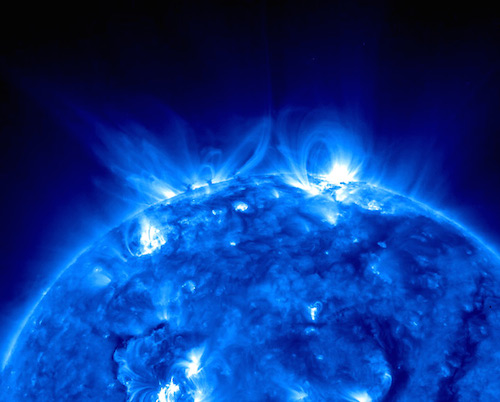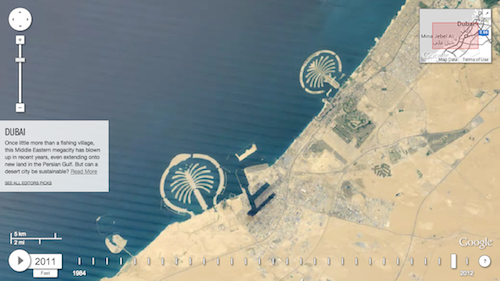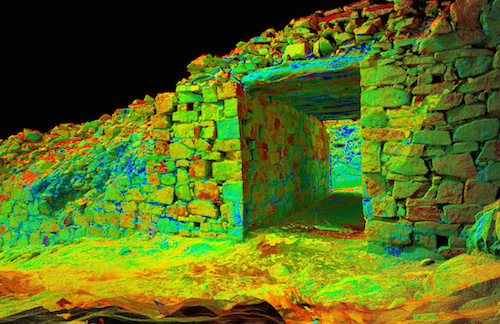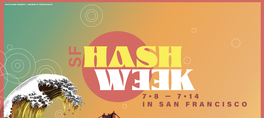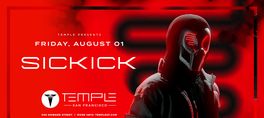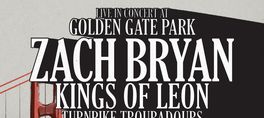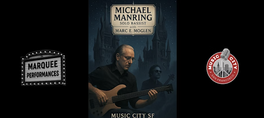More than one year in the making, this show gives a rare glimpse into how the boundaries of photography and video are being pushed to illuminate the distant past, unfamiliar perspectives and the miniature ecosystems hidden in front of us. Featuring renowned multimedia journalists, scientists, data visualists, space researchers and science-based artists, discover the worlds beyond what our naked eyes can see.
Timelapse Earth
Jonathan Woods (Senior Multimedia Editor, Time Magazine) & Rebecca Moore (Engineering Manager Earth Engine, Google)
A joint project between Time and Google, Timelapse tells the story of a finite planet — razing as we build, destroying even as we preserve. These mesmerizing videos chronicle the evolution of our landscapes, created from decades of satellite imagery captured by the USGS, amassed by Google and curated by Time.
A Journey Through the Microcosm
Dr. Manfred Auer (Staff Scientist, Lawrence Berkeley National Laboratory)
Head of the Auer Lab, Manfred will show his work visualizing cells and tissues at the macromolecular level using transmission electron microscopes and novel advanced 3D imaging. His recent work investigates the molecular mechanism of hearing, mammary gland development, breast cancer, microbial communities and biofilms.
Staring at the Sun
Todd Hoeksema (Solar Physicist, Stanford University)
The sun is a violent, living phenomenon that scientists are still trying to map and understand. Todd will explore the sun’s cycles, magnetic activity, coronal mass ejections that can disrupt earth’s power grids, solar winds and more using space-based imagery from NASA’s Solar TErrestrial RElations Observatory (STEREO) and Solar Dynamics Observatory (SDO) missions.
Carbon III
Charles Lindsay (Artist in Residence, SETI Institute)
Charles invented the CARBON camera-less photographic process under a Guggenheim Fellowship to create art inspired by scientific processes. Electrifying and manipulating a frozen carbon-based emulsion, he blends high-definition photography and video to produce otherworldly fly-thrus of microscopic landscapes.
History Point Cloud
Scott Lee (Director of Operations, CyArk)
Spurred by the Taliban’s destruction of the 1600-year-old Bamiyan Buddhas in Afghanistan, CyArk was founded with the mission of using new technologies to create a free, 3D online backup of the world’s cultural heritage sites.Scott will show a few sites documented through 3D imaging tools such as LiDAR, which illuminates landscapes and spaces with a laser and creates a 3D map based on reflected light.
show less
Timelapse Earth
Jonathan Woods (Senior Multimedia Editor, Time Magazine) & Rebecca Moore (Engineering Manager Earth Engine, Google)
A joint project between Time and Google, Timelapse tells the story of a finite planet — razing as we build, destroying even as we preserve. These mesmerizing videos chronicle the evolution of our landscapes, created from decades of satellite imagery captured by the USGS, amassed by Google and curated by Time.
A Journey Through the Microcosm
Dr. Manfred Auer (Staff Scientist, Lawrence Berkeley National Laboratory)
Head of the Auer Lab, Manfred will show his work visualizing cells and tissues at the macromolecular level using transmission electron microscopes and novel advanced 3D imaging. His recent work investigates the molecular mechanism of hearing, mammary gland development, breast cancer, microbial communities and biofilms.
Staring at the Sun
Todd Hoeksema (Solar Physicist, Stanford University)
The sun is a violent, living phenomenon that scientists are still trying to map and understand. Todd will explore the sun’s cycles, magnetic activity, coronal mass ejections that can disrupt earth’s power grids, solar winds and more using space-based imagery from NASA’s Solar TErrestrial RElations Observatory (STEREO) and Solar Dynamics Observatory (SDO) missions.
Carbon III
Charles Lindsay (Artist in Residence, SETI Institute)
Charles invented the CARBON camera-less photographic process under a Guggenheim Fellowship to create art inspired by scientific processes. Electrifying and manipulating a frozen carbon-based emulsion, he blends high-definition photography and video to produce otherworldly fly-thrus of microscopic landscapes.
History Point Cloud
Scott Lee (Director of Operations, CyArk)
Spurred by the Taliban’s destruction of the 1600-year-old Bamiyan Buddhas in Afghanistan, CyArk was founded with the mission of using new technologies to create a free, 3D online backup of the world’s cultural heritage sites.Scott will show a few sites documented through 3D imaging tools such as LiDAR, which illuminates landscapes and spaces with a laser and creates a 3D map based on reflected light.
More than one year in the making, this show gives a rare glimpse into how the boundaries of photography and video are being pushed to illuminate the distant past, unfamiliar perspectives and the miniature ecosystems hidden in front of us. Featuring renowned multimedia journalists, scientists, data visualists, space researchers and science-based artists, discover the worlds beyond what our naked eyes can see.
Timelapse Earth
Jonathan Woods (Senior Multimedia Editor, Time Magazine) & Rebecca Moore (Engineering Manager Earth Engine, Google)
A joint project between Time and Google, Timelapse tells the story of a finite planet — razing as we build, destroying even as we preserve. These mesmerizing videos chronicle the evolution of our landscapes, created from decades of satellite imagery captured by the USGS, amassed by Google and curated by Time.
A Journey Through the Microcosm
Dr. Manfred Auer (Staff Scientist, Lawrence Berkeley National Laboratory)
Head of the Auer Lab, Manfred will show his work visualizing cells and tissues at the macromolecular level using transmission electron microscopes and novel advanced 3D imaging. His recent work investigates the molecular mechanism of hearing, mammary gland development, breast cancer, microbial communities and biofilms.
Staring at the Sun
Todd Hoeksema (Solar Physicist, Stanford University)
The sun is a violent, living phenomenon that scientists are still trying to map and understand. Todd will explore the sun’s cycles, magnetic activity, coronal mass ejections that can disrupt earth’s power grids, solar winds and more using space-based imagery from NASA’s Solar TErrestrial RElations Observatory (STEREO) and Solar Dynamics Observatory (SDO) missions.
Carbon III
Charles Lindsay (Artist in Residence, SETI Institute)
Charles invented the CARBON camera-less photographic process under a Guggenheim Fellowship to create art inspired by scientific processes. Electrifying and manipulating a frozen carbon-based emulsion, he blends high-definition photography and video to produce otherworldly fly-thrus of microscopic landscapes.
History Point Cloud
Scott Lee (Director of Operations, CyArk)
Spurred by the Taliban’s destruction of the 1600-year-old Bamiyan Buddhas in Afghanistan, CyArk was founded with the mission of using new technologies to create a free, 3D online backup of the world’s cultural heritage sites.Scott will show a few sites documented through 3D imaging tools such as LiDAR, which illuminates landscapes and spaces with a laser and creates a 3D map based on reflected light.
read more
Timelapse Earth
Jonathan Woods (Senior Multimedia Editor, Time Magazine) & Rebecca Moore (Engineering Manager Earth Engine, Google)
A joint project between Time and Google, Timelapse tells the story of a finite planet — razing as we build, destroying even as we preserve. These mesmerizing videos chronicle the evolution of our landscapes, created from decades of satellite imagery captured by the USGS, amassed by Google and curated by Time.
A Journey Through the Microcosm
Dr. Manfred Auer (Staff Scientist, Lawrence Berkeley National Laboratory)
Head of the Auer Lab, Manfred will show his work visualizing cells and tissues at the macromolecular level using transmission electron microscopes and novel advanced 3D imaging. His recent work investigates the molecular mechanism of hearing, mammary gland development, breast cancer, microbial communities and biofilms.
Staring at the Sun
Todd Hoeksema (Solar Physicist, Stanford University)
The sun is a violent, living phenomenon that scientists are still trying to map and understand. Todd will explore the sun’s cycles, magnetic activity, coronal mass ejections that can disrupt earth’s power grids, solar winds and more using space-based imagery from NASA’s Solar TErrestrial RElations Observatory (STEREO) and Solar Dynamics Observatory (SDO) missions.
Carbon III
Charles Lindsay (Artist in Residence, SETI Institute)
Charles invented the CARBON camera-less photographic process under a Guggenheim Fellowship to create art inspired by scientific processes. Electrifying and manipulating a frozen carbon-based emulsion, he blends high-definition photography and video to produce otherworldly fly-thrus of microscopic landscapes.
History Point Cloud
Scott Lee (Director of Operations, CyArk)
Spurred by the Taliban’s destruction of the 1600-year-old Bamiyan Buddhas in Afghanistan, CyArk was founded with the mission of using new technologies to create a free, 3D online backup of the world’s cultural heritage sites.Scott will show a few sites documented through 3D imaging tools such as LiDAR, which illuminates landscapes and spaces with a laser and creates a 3D map based on reflected light.
show less
Date/Times:
474 24th Street, Oakland, CA 94612
The Best Events
Every Week in Your Inbox
From Our Sponsors
UPCOMING EVENTS
Great suggestion! We'll be in touch.
Event reviewed successfully.
